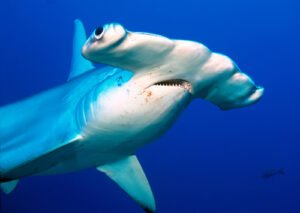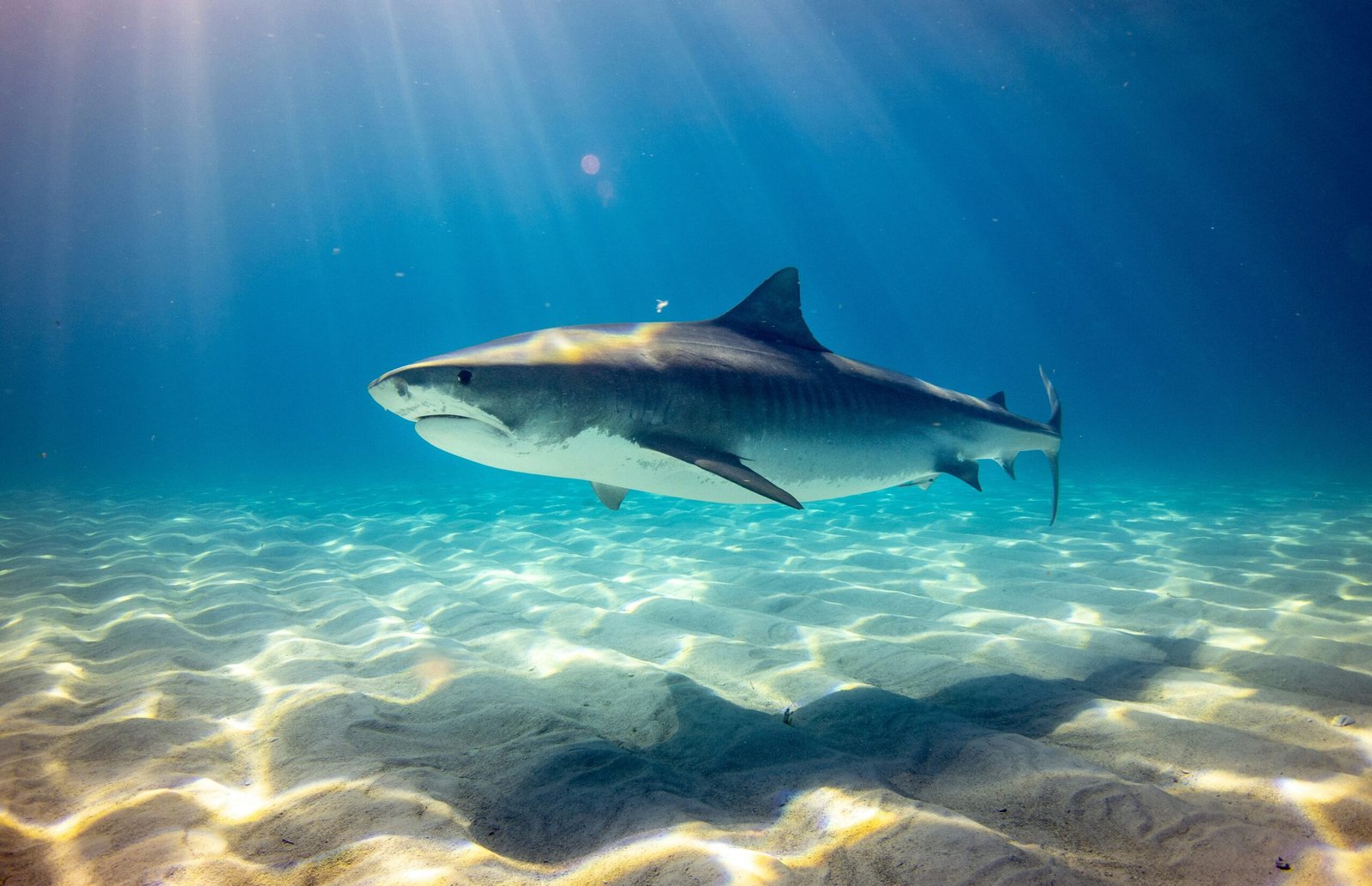7 Fun Facts About Shark facts
Sharks have long been the subject of human fascination and curiosity, captivating our imaginations with their powerful presence and mysterious allure. As one of the ocean’s top predators, sharks play a pivotal role in maintaining the balance of marine ecosystems. With over 500 species varying dramatically in size, behavior, and habitat, sharks represent a remarkable diversity within the aquatic world.
Unlike other fish, sharks possess several unique characteristics that set them apart. Their skeletons are made of cartilage rather than bone, providing both flexibility and strength. Additionally, their streamlined bodies and specialized sensory organs enable them to be highly efficient hunters. These adaptations, among others, highlight the evolutionary success of sharks, which have existed for over 400 million years, predating even the dinosaurs.
Sharks’ importance extends beyond their ecological roles; they have also permeated human culture and history. Ancient civilizations revered them, as evidenced by shark-related artifacts and mythology. In modern times, sharks continue to intrigue us, featuring prominently in literature, film, and scientific research. This enduring interest is a testament to their enigmatic nature and the awe they inspire.
As we delve into the world of sharks, it is essential to recognize their significance not only as formidable predators but also as vital components of marine biodiversity. By understanding and appreciating sharks, we can foster a greater respect for these magnificent creatures and the ecosystems they inhabit. The following seven fun facts will offer a glimpse into the extraordinary lives of sharks, revealing surprising and delightful insights that underscore their importance and mystique.
Sharks Have Been Around for Millions of Years
Sharks are among the oldest creatures on our planet, with a history that stretches back over 400 million years. This astonishing timeline means that sharks were already swimming in the world’s oceans long before the dinosaurs roamed the Earth. Their ancient lineage is well-documented through various fossil discoveries, revealing much about their early forms and evolutionary journey.
Fossils of early sharks, dating back to the Devonian period, provide evidence of their existence over 400 million years ago. These fossils indicate that early sharks were quite different from the species we recognize today. For instance, the ancient shark species known as Cladoselache had a streamlined body and smooth skin, lacking the rough scales typical of modern sharks. Despite these differences, their core biology has remained remarkably consistent through the ages.
One of the most notable ancient sharks is the Megalodon, which lived approximately 23 to 3.6 million years ago. The Megalodon was a massive predator, with some estimates suggesting it reached lengths of up to 60 feet. Fossils of Megalodon teeth, which can be over 7 inches long, have been found in various parts of the world, providing clues about their size and feeding habits. These ancient sharks had serrated teeth similar to those of modern great white sharks, indicating a similar predatory lifestyle.
Over millions of years, sharks have evolved and adapted to various environmental changes. However, their basic anatomical and physiological traits have remained relatively unchanged. This evolutionary stability is a testament to their successful adaptation strategies, which have allowed them to survive multiple mass extinction events. The cartilaginous skeleton, keen senses, and efficient predatory instincts that characterized ancient sharks are still present in modern species, showcasing the enduring nature of their design.
In essence, the long history of sharks highlights their resilience and adaptability. From their ancient ancestors to the diverse species we see today, sharks have continuously thrived in the world’s oceans, maintaining their role as apex predators across the millennia.
Sharks Have a Sixth Sense
Sharks possess a remarkable sensory system known as the ampullae of Lorenzini, which grants them an extraordinary “sixth sense.” This unique system is composed of small, jelly-filled pores located around their snouts. These pores are highly sensitive to electromagnetic fields generated by other living organisms. As a result, sharks can detect even the faintest of electric signals, providing them with a significant edge in both hunting and navigation.
The ampullae of Lorenzini enable sharks to sense the electric fields produced by the muscle contractions and heartbeats of their prey. This ability is especially useful in murky waters or during nighttime when visibility is low. For instance, the hammerhead shark, with its wide head, has an increased number of these pores, allowing it to detect prey buried under the sand. Similarly, the great white shark can sense the weak electrical fields of seals and fish, making it an adept hunter even in challenging conditions.
Beyond hunting, this sixth sense also aids in navigation. Sharks can detect the Earth’s magnetic field, which helps them migrate across vast oceanic distances with remarkable precision. This navigational skill is essential for species like the scalloped hammerhead, which travels long distances between breeding and feeding grounds. By sensing the magnetic fields, these sharks can maintain a consistent route, ensuring they reach their destinations efficiently.
Moreover, the ampullae of Lorenzini play a crucial role in social interactions among sharks. During mating, sharks can detect the bioelectric signals of potential partners, facilitating successful reproduction. This sensory system also allows them to locate other sharks, whether for cooperative hunting or territorial purposes.
In essence, the ampullae of Lorenzini make sharks formidable predators and skilled navigators. This sixth sense, unique to sharks, underscores their evolutionary success and their ability to thrive in diverse marine environments. Each species has adapted this sensory system to its specific needs, showcasing the incredible versatility and efficiency of sharks in the animal kingdom.
Sharks Can Go Into a Trance
One of the intriguing aspects of shark behavior is a phenomenon known as tonic immobility. This trance-like state occurs when sharks are gently turned upside down. During this state, sharks appear to be in a catatonic condition, remaining motionless and unresponsive to external stimuli. This fascinating behavior has been observed across various shark species, including the great white shark, the lemon shark, and the tiger shark.
Researchers have harnessed the knowledge of tonic immobility to study sharks more safely and effectively. By inducing this state, scientists can conduct tagging, measurements, and other necessary procedures without causing stress or harm to the animal. This practice has significantly contributed to our understanding of shark biology, behavior, and ecology.
Several theories attempt to explain why sharks experience tonic immobility. One hypothesis suggests that it is an anti-predator response, a form of feigned death that may deter potential predators. Another theory posits that tonic immobility could be related to mating behaviors, as it has been observed that some sharks enter this state during courtship and copulation.
Additionally, the phenomenon might involve a neurological component. Some scientists believe that flipping a shark activates its vestibular system, which is responsible for maintaining balance and spatial orientation, leading to the temporary immobilization. Despite these theories, the exact mechanisms behind tonic immobility remain a topic of ongoing research and debate.
Understanding tonic immobility not only provides a unique glimpse into shark behavior but also enhances the safety and efficacy of marine research. This behavior underscores the complexity and adaptability of sharks, contributing to their mystique and our ever-growing fascination with these remarkable creatures.
Sharks Have Diverse Reproductive Strategies
Sharks exhibit a fascinating array of reproductive strategies, which can be broadly categorized into three types: oviparity, ovoviviparity, and viviparity. Each strategy has unique characteristics and evolutionary advantages, showcasing the adaptability and diversity of these remarkable marine predators.
Oviparity, or egg-laying, is a reproductive method where sharks lay eggs that develop and hatch outside the mother’s body. A notable example is the horn shark (Heterodontus francisci), which deposits spiral-shaped egg cases in crevices and rocky substrates. The advantage of oviparity is that it allows the mother to continue foraging and avoid the energetic costs associated with carrying developing embryos. However, the eggs are exposed to predation and environmental hazards, which can reduce survival rates.
Ovoviviparity is a strategy where eggs hatch inside the mother’s body, and the young are born live. The sand tiger shark (Carcharias taurus) is a prime example. In this species, embryos develop in utero and are nourished by yolk sacs. This method provides the developing young with some protection from predators and environmental conditions, but it can lead to intrauterine cannibalism, where stronger embryos consume their weaker siblings.
Viviparity, or live birth, is the most advanced reproductive strategy among sharks. Species such as the bull shark (Carcharhinus leucas) exhibit this method, where embryos develop inside the mother and receive nourishment directly from her through a placental connection. This method offers the highest level of protection and nourishment for the developing young, increasing their chances of survival. However, it also demands significant energy and resources from the mother, potentially limiting the number of offspring she can produce.
In addition to these reproductive strategies, sharks exhibit a range of interesting mating behaviors. For instance, some species engage in complex courtship rituals, while others, like the great white shark (Carcharodon carcharias), display aggressive mating behaviors that can result in visible bite marks on females. These behaviors ensure the successful transfer of genetic material and contribute to the sharks’ evolutionary success.
Some shark species possess a fascinating biological trait: bioluminescence. Among these remarkable creatures is the Lantern Shark, a species known for its ability to glow in the dark. This extraordinary capability is not merely a random occurrence but a well-evolved feature that plays a crucial role in the survival strategies of these sharks.
Bioluminescence in sharks is produced through photophores, specialized light-emitting organs scattered across their bodies. The Lantern Shark, for instance, uses this light production for various purposes. One primary function is communication. In the dark depths of the ocean, visual signals are vital for interaction among individuals of the same species, aiding in mating rituals and social behaviors.
Moreover, bioluminescence serves as an effective camouflage technique known as counter-illumination. By emitting light from their undersides, these sharks can blend with the faint light filtering down from the ocean surface, rendering them nearly invisible to predators and prey below. This method of concealment is particularly advantageous in the deep-sea environment, where other sources of light are scarce, and the element of surprise is crucial for survival.
Additionally, some bioluminescent sharks utilize their glowing bodies as a hunting strategy. The emitted light can attract smaller organisms, luring them within reach of the shark’s jaws. This predatory advantage allows bioluminescent sharks to effectively capture prey in the otherwise dark and resource-scarce habitats they inhabit.
The environments where these bioluminescent sharks thrive are typically deep-sea regions, often below 200 meters where sunlight penetration is minimal. In such extreme conditions, the ability to produce light becomes a significant evolutionary adaptation. The glow not only aids in survival but also underscores the incredible diversity and adaptability of shark species.
In summary, the bioluminescent capabilities of sharks like the Lantern Shark highlight the intricate and marvelous adaptations that these creatures have developed. Through communication, camouflage, and innovative hunting techniques, bioluminescence plays a pivotal role in their underwater existence, demonstrating the complex interplay between biology and environment in the deep sea.
Sharks Can Travel Long Distances
Sharks are remarkable creatures known for their impressive migratory patterns, traversing vast distances across the world’s oceans. These migrations are driven by various factors, including breeding, feeding, and seasonal changes. The Great White Shark, for example, is renowned for its extensive journeys. These apex predators have been tracked traveling from South Africa to Australia, a distance of over 12,000 miles, in search of prey and suitable breeding grounds. This incredible feat showcases their endurance and navigational skills.
Similarly, the Whale Shark, the largest fish in the ocean, undertakes long-distance migrations. These gentle giants migrate to different regions in response to changes in water temperature and the availability of plankton, their primary food source. Whale Sharks have been known to travel thousands of miles between feeding grounds, such as the Yucatán Peninsula in Mexico and the Philippines, demonstrating their ability to adapt to varying environmental conditions.
Other shark species, like the Hammerhead Shark, also exhibit notable migratory behavior. Hammerheads often move in large schools, migrating to warmer waters during the winter months for breeding purposes. This seasonal migration ensures the survival of their offspring by providing a conducive environment for young sharks to thrive.
The reasons behind these extensive migrations are multifaceted. Breeding is a critical factor, as sharks travel to specific locations to mate and give birth. Feeding is another primary driver, with sharks journeying to regions abundant in prey to sustain their energy needs. Seasonal changes in water temperature and ocean currents also play a significant role, influencing the distribution of prey and the preferred habitats of different shark species.
Understanding the migratory patterns of sharks is crucial for their conservation. By tracking these movements, scientists can identify critical habitats and implement measures to protect these magnificent creatures and their ecosystems. The long-distance traveling abilities of sharks are a testament to their adaptability and resilience in the ever-changing marine environment.
Sharks Are Vital to Ocean Health
Sharks play a crucial role in maintaining the health and balance of marine ecosystems. As apex predators, they are at the top of the food chain and help regulate the populations of other marine species. This regulation is essential as it prevents any single species from becoming too dominant, which could lead to imbalances that affect the entire ecosystem. By preying on the weak and sick, sharks also contribute to the overall genetic health of marine populations.
However, the decline in shark populations poses a significant threat to ocean health. Overfishing, habitat loss, and the demand for shark fins have led to a dramatic decrease in shark numbers. This decline disrupts the delicate balance of marine ecosystems. For instance, the reduction in shark populations can lead to an increase in the population of their prey, which in turn can overconsume their own prey species, causing a cascading effect throughout the food web. Such imbalances can result in the degradation of coral reefs, seagrass beds, and other critical marine habitats.
Conservation efforts are vital to ensuring the survival of shark species and, by extension, the health of our oceans. Protecting sharks through marine protected areas, sustainable fishing practices, and international regulations can help stabilize their populations. Public awareness and education about the importance of sharks are also crucial components of conservation strategies. By understanding the essential role sharks play in marine ecosystems, we can better appreciate the need for their protection.
In conclusion, sharks are indispensable to the health of our oceans. Their role as apex predators ensures the balance and diversity of marine life. Protecting these incredible creatures is not just about saving a single species but about preserving the intricate web of life that sustains ocean health. Conservation efforts are essential for maintaining the vitality and resilience of marine ecosystems for future generations.
